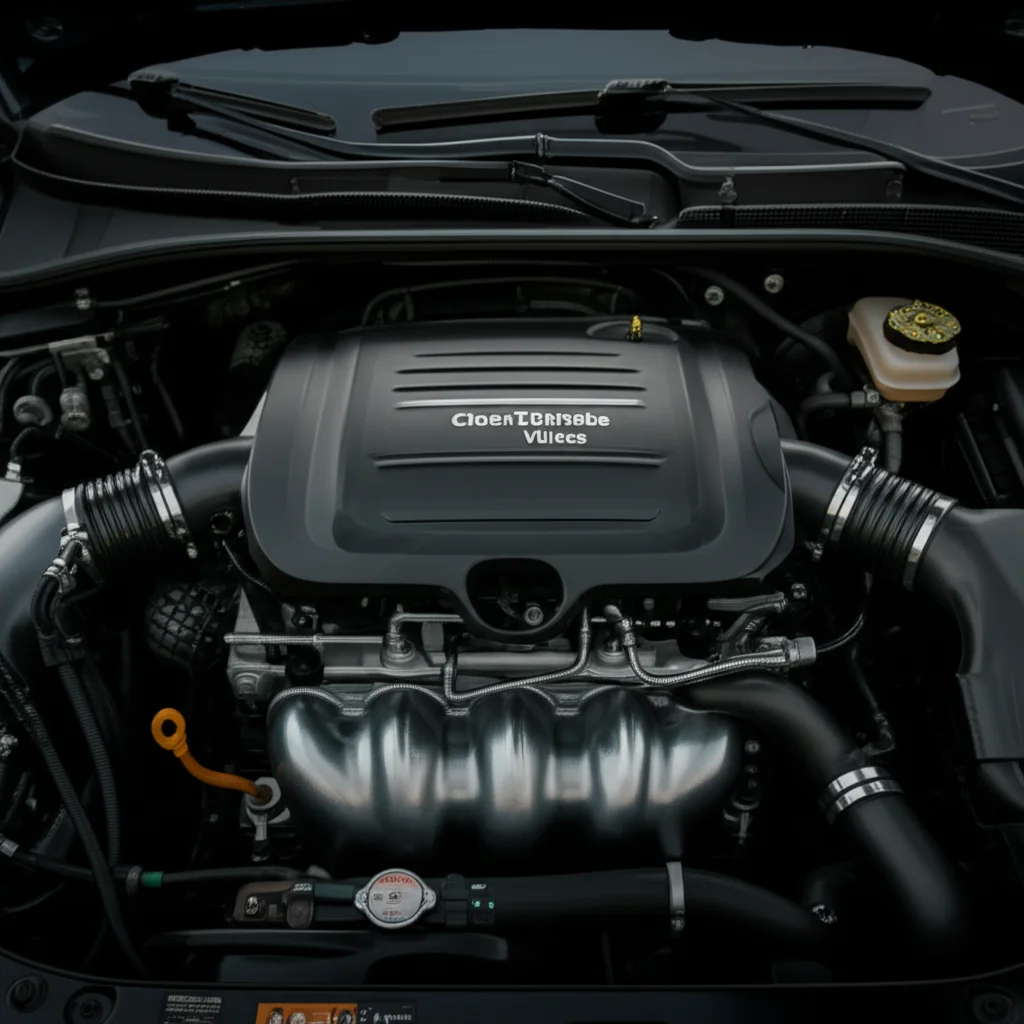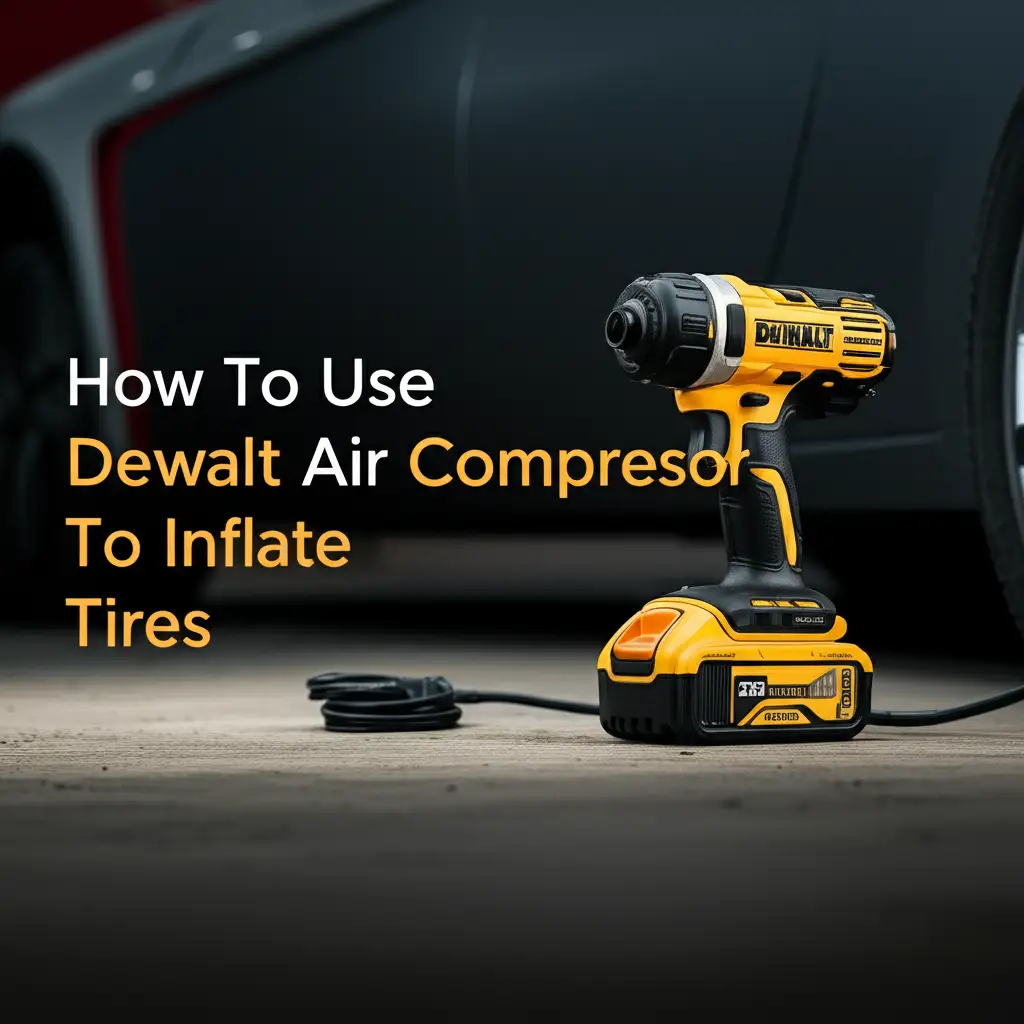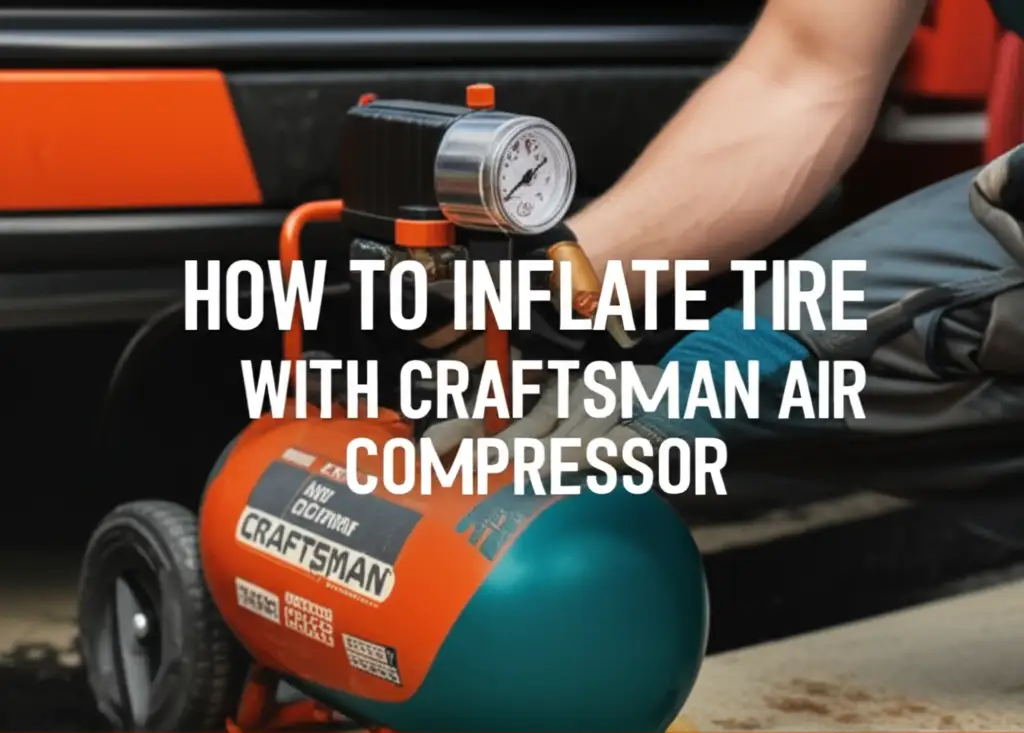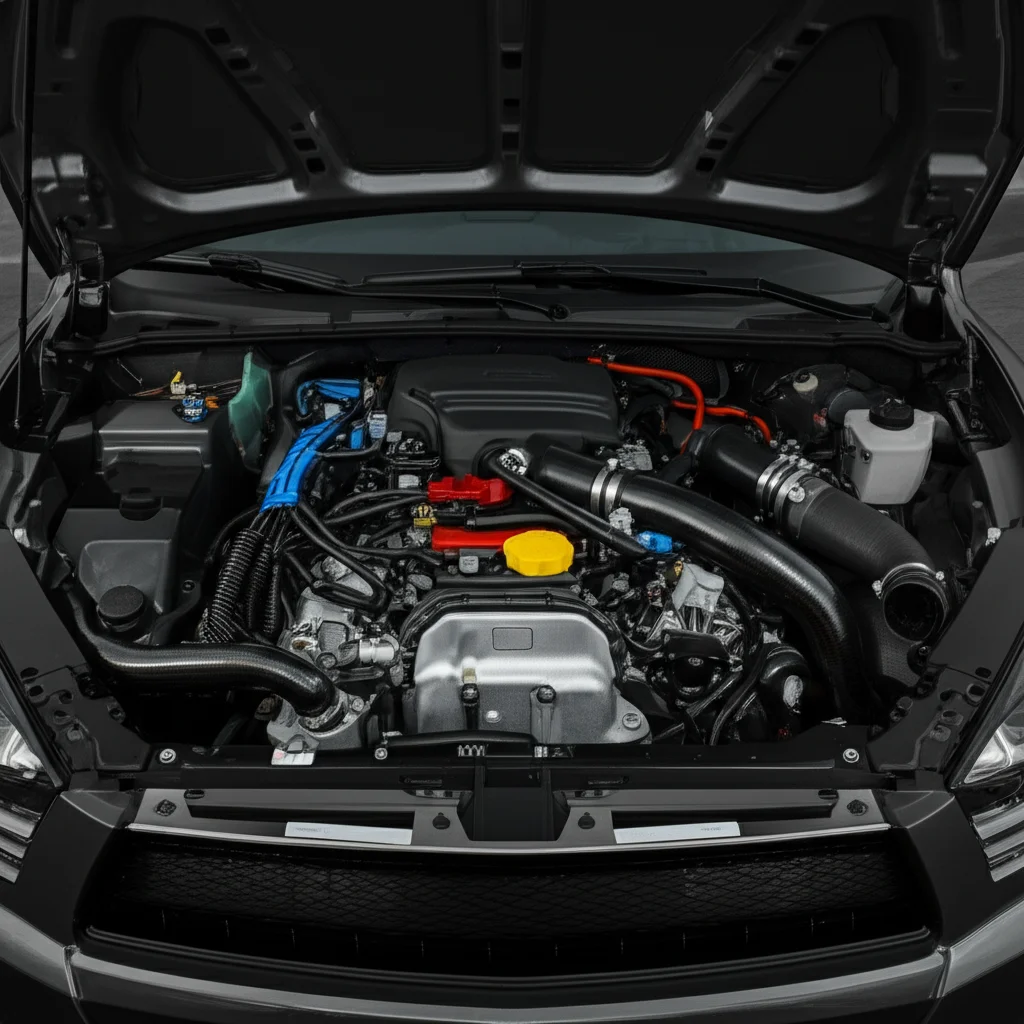· Todd Martin · Automotive · 20 min read
How To Inflate Tire With Portable Air Compressor

Mastering Tire Inflation: How To Inflate Tire With Portable Air Compressor
Imagine you are on a road trip. Suddenly, your tire pressure light flashes on the dashboard. This moment can feel stressful, especially if you are far from a service station. Knowing how to inflate tire with portable air compressor makes you prepared for such situations. A portable air compressor is a valuable tool for any vehicle owner. It helps you maintain correct tire pressure for safety, fuel efficiency, and tire longevity. This guide simplifies the process, giving you the confidence to manage your tire inflation needs on your own. I will explain everything from gathering your tools to performing the actual inflation.
Takeaway
- Gather the correct tools, including your portable air compressor and tire gauge.
- Always check the vehicle’s recommended tire pressure before inflating.
- Connect the compressor securely to the tire valve stem.
- Inflate the tire in short bursts, checking pressure frequently.
- Do not overinflate; stop when the tire reaches the correct PSI.
To inflate a tire with a portable air compressor, first find the correct PSI. Then, attach the compressor nozzle to the tire valve stem. Turn on the compressor and monitor the pressure gauge. Inflate the tire to the recommended PSI, then remove the nozzle.
Understanding Your Portable Air Compressor
A portable air compressor is a compact device that pressurizes ambient air. It then delivers this air through a hose to inflate various items. These items include tires, sports equipment, and inflatable toys. Portable compressors come in different sizes and power sources.
Many models plug into your car’s 12V auxiliary power outlet. Others use a rechargeable battery. Knowing your specific model helps you use it effectively. Most portable air compressors come with a built-in pressure gauge. Some have digital displays for easy reading. Using a separate, high-quality tire gauge offers more accuracy. I find having both a built-in gauge and an external gauge helpful for cross-checking. Understanding your compressor’s features is the first step to successful tire inflation.
Types of Portable Air Compressors
Portable air compressors vary by design and intended use. The most common type for vehicles is the 12V DC compressor. This compressor plugs directly into your car’s cigarette lighter or power port. It is ideal for emergency tire inflation on the go. Battery-powered portable air compressors offer even more flexibility. They run on rechargeable lithium-ion batteries. This means you do not need to be near a power source. They are great for bikes, ATVs, and cars where a power outlet is not convenient. Some larger portable units may use a standard 120V AC outlet. These are better for garage use or if you have access to household power. Choose a compressor that fits your regular needs.
Key Features to Look For
When you choose a portable air compressor, several features matter. Look for one with a clear pressure gauge. Digital gauges are often easier to read than analog ones. Check the maximum PSI it can deliver. Most car tires need 30-40 PSI, so a compressor that reaches at least 80-100 PSI provides good headroom. A longer power cord and air hose offer more reach. This helps you get to all tires without moving your vehicle. Consider models with automatic shut-off. This feature prevents over-inflation by stopping the compressor once it reaches your set pressure. This makes the job easier and safer.
Essential Tools and Safety First
Before you begin to inflate your tire, gather all necessary items. Having everything ready saves time and ensures a smooth process. You will need your portable air compressor, of course. A reliable tire pressure gauge is also crucial. Do not rely solely on the compressor’s built-in gauge. A separate gauge gives a more accurate reading. You may also need your car’s owner’s manual to find the correct tire pressure.
Safety is paramount when working with pressurized air. Always work in a well-lit area. Make sure your vehicle is on a flat, stable surface. Turn off your car’s engine during inflation to avoid exhaust fumes and save fuel. Wear safety glasses to protect your eyes from any debris or unexpected air bursts. Avoid touching the compressor during operation, as some parts can get hot. Taking these simple precautions helps prevent accidents.
Tools You Will Need
To effectively inflate your tire, specific tools are necessary. Your primary tool is the portable air compressor itself. Ensure it is fully charged or has enough power for your task. A good quality tire pressure gauge is your next essential item. These gauges come in various forms, including stick, digital, and dial gauges. Digital gauges often provide the most precise readings. Keep a small rag or cloth handy to wipe dirt from the tire valve stem. This ensures a clean connection and prevents leaks. I also recommend having a small flashlight, especially if you are working in low light conditions or at night. These tools make the inflation process simple.
Important Safety Guidelines
Safety must always come first when handling pressurized equipment. Before you start, check your compressor’s instruction manual. This manual contains specific safety warnings and operating procedures. Never exceed the maximum pressure rating of your tire or compressor. Overinflating a tire can cause it to burst, which is extremely dangerous. Keep children and pets away from the work area. The compressor can be noisy, and moving parts pose a hazard. If the compressor feels excessively hot, turn it off and let it cool down. Proper safety measures help you get the job done without incident. Always prioritize your well-being.
Locating Your Tire’s Recommended Pressure
Knowing the correct tire pressure is the most important step before inflation. Each vehicle has a specific recommended tire pressure. This pressure helps ensure optimal performance, safety, and tire life. You will find this information in a few key places. The most common spot is on a sticker inside your driver’s side door jamb. This sticker also lists the tire size and other important specifications. If you cannot find it there, check your vehicle’s owner’s manual. The manual provides detailed information about all vehicle components.
Never use the maximum pressure listed on the tire’s sidewall. This number is the maximum pressure the tire can hold, not the recommended operating pressure for your vehicle. Using the vehicle manufacturer’s recommended PSI ensures your tires perform as intended. I always double-check these sources before I inflate my tires. This habit prevents potential issues and keeps my vehicle safe.
Where to Find PSI Information
Finding the correct PSI is easier than you think. Open your driver’s side door. Look for a sticker usually located on the door frame or the door itself. This label is often white or yellow and contains various vehicle specifications. It lists the recommended cold tire inflation pressure for both front and rear tires. It may also include the spare tire’s pressure. Remember, these are “cold” inflation pressures. This means you should check your tires when the car has not been driven for at least three hours. If the sticker is missing or unreadable, consult your car’s owner’s manual. This book has all the details specific to your car model.
Why Correct Pressure Matters
Maintaining correct tire pressure offers many benefits. Firstly, it enhances vehicle safety. Properly inflated tires provide better traction and handling. This reduces the risk of skidding or losing control, especially in adverse weather. Secondly, it improves fuel efficiency. Underinflated tires create more rolling resistance. This means your engine works harder, consuming more fuel. Thirdly, correct pressure extends tire lifespan. Uneven pressure causes uneven wear, leading to premature tire replacement. This saves you money in the long run. Finally, it ensures a smoother and more comfortable ride. Correct pressure makes your vehicle perform its best.
Step-by-Step Guide: How to Inflate Your Tire
Inflating a tire with a portable air compressor is a straightforward process. Once you have located the correct PSI and gathered your tools, you are ready to begin. This step-by-step guide will walk you through each action. My experience shows that following these steps makes the task quick and easy.
First, prepare your tire’s valve stem. This small stem sticks out from your wheel. Unscrew its cap and set it aside in a safe place. You do not want to lose it. The valve stem is where you will attach the air hose. Next, connect your compressor’s nozzle to the valve stem. Push it on firmly to ensure a tight seal. You should not hear air leaking. Some nozzles screw on, while others use a lever or clip mechanism. Make sure it is secure. Once connected, turn on your portable air compressor. Watch the pressure gauge as the tire inflates. Using your portable air compressor to inflate tires becomes second nature with practice.
Connecting the Compressor
Connecting the portable air compressor correctly is crucial for efficient inflation. After removing the valve stem cap, locate the compressor’s air hose nozzle. This nozzle has a fitting designed to connect to the tire valve. For screw-on nozzles, twist it clockwise onto the valve stem until it feels snug. For lever-style nozzles, push the nozzle onto the valve stem. Then, flip the lever to lock it in place. Make sure the connection is tight. A poor seal will cause air to escape, making inflation slow or ineffective. You should hear a slight hiss of air escaping initially, but it should stop once the connection is firm. This ensures all air goes into the tire. This step is similar whether you are using a basic portable compressor or a Craftsman air compressor to inflate tires.
The Inflation Process
With the compressor connected, you can start inflation. Turn on your portable air compressor. Most compressors have a simple on/off switch. Listen for the sound of the compressor working. It will start pumping air into the tire. Keep a close eye on the pressure gauge. Inflate the tire in short bursts. For example, inflate for 10-15 seconds, then stop and check the pressure. This allows you to avoid over-inflation. Repeat this process until the tire reaches the recommended PSI. If you use a separate tire gauge, remove the compressor nozzle briefly to take a reading. Then, reattach and continue if needed. This method helps maintain precise control over the inflation process. If you are specifically using your portable air compressor for car tires, always follow the car’s recommended PSI.
Monitoring Pressure and Avoiding Over-Inflation
As you inflate your tire, continuous pressure monitoring is vital. This step prevents both under-inflation and the more dangerous over-inflation. Over-inflated tires are rigid and can lead to a harsher ride. They also reduce the tire’s contact patch with the road. This reduces traction and increases braking distance. In extreme cases, an over-inflated tire can even burst, causing severe injury or vehicle damage.
Use your separate, accurate tire pressure gauge frequently during the inflation process. Do not just rely on the compressor’s built-in gauge. It can sometimes be less accurate. Inflate the tire slightly below the recommended PSI. Then, use your hand gauge to get a precise reading. Slowly add more air, checking each time, until you reach the exact target pressure. It is always safer to inflate in small increments. This approach ensures your tires are at the optimal pressure for safety and performance.
How to Check Tire Pressure Accurately
Checking tire pressure accurately requires a good gauge and proper technique. After inflating for a short burst, turn off the compressor. Remove the compressor nozzle from the valve stem. Quickly press your standalone tire pressure gauge onto the valve stem. Push firmly until the hiss of air stops and the gauge provides a reading. Note the PSI shown on the gauge. If it is below your target, reattach the compressor and add more air. Repeat this inflate-and-check cycle until you reach the recommended PSI. If you accidentally over-inflate, you can release air by pressing the small pin inside the valve stem with the back of your tire gauge. This careful process gives you perfect tire pressure.
The Dangers of Over-Inflation
Over-inflation carries several risks that compromise safety and tire life. When a tire is over-inflated, its contact patch with the road shrinks. This means less rubber touches the ground, which reduces grip. Reduced grip impacts steering control and braking effectiveness. The tire also becomes stiffer, leading to a bumpier ride and increased wear on the center of the tread. This uneven wear shortens the tire’s lifespan. Most importantly, extreme over-inflation can cause the tire to explode. This is a very dangerous event. Always aim for the manufacturer’s recommended PSI. Never exceed the maximum pressure listed on the tire’s sidewall.
Troubleshooting Common Portable Air Compressor Issues
Sometimes, your portable air compressor might not work as expected. This can be frustrating, especially when you need it most. Common issues include the compressor not turning on, running but not inflating, or shutting off unexpectedly. Knowing how to troubleshoot these problems can save you time and stress.
If your portable air compressor does not turn on, first check its power source. Ensure it is securely plugged into your car’s 12V outlet or that its battery is charged. If it still does not power up, the fuse might be blown. This is a common issue. If the compressor runs but fails to inflate the tire, check the connection to the valve stem. A loose connection will cause air to leak. Ensure the nozzle is firmly attached. Sometimes, internal clogs can restrict airflow. If your portable air compressor keeps shutting off, it might be overheating. Many models have an automatic shut-off feature to prevent damage. Letting it cool down usually resolves this. Why is my portable air compressor not working covers these issues in more detail.
Compressor Not Turning On
When your portable air compressor refuses to power up, start with the basics. First, check the power connection. If it plugs into your car’s 12V outlet, ensure the plug is fully inserted. Sometimes, a loose connection prevents power flow. If your compressor uses a rechargeable battery, check its charge level. A depleted battery will prevent operation. Charge the battery fully before trying again. If these checks do not resolve the issue, inspect the compressor’s fuse. Many portable compressors have an inline fuse, often located near the power plug. A blown fuse will stop the compressor from working. Replace it with a fuse of the correct amperage if it is blown. This is a common solution when your portable air compressor keeps blowing fuses.
Compressor Runs, But Tire Doesn’t Inflate
If your portable air compressor turns on but the tire pressure does not increase, the issue likely lies with the air delivery. The first thing to check is the connection to the tire valve stem. Ensure the nozzle is tightly secured. Any air leaks at this connection point will prevent air from entering the tire efficiently. You should not hear a strong hiss of air escaping. Next, check the valve stem itself. Sometimes, the valve core can be stuck or damaged. Gently press the small pin in the center of the valve stem. Air should escape with a hiss. If no air comes out, the valve core might need replacement. Also, check for kinks or blockages in the air hose. A folded hose or debris inside can restrict airflow.
Compressor Keeps Shutting Off
A portable air compressor that repeatedly shuts off often indicates overheating. Many models have built-in thermal protection. This feature automatically turns off the unit to prevent damage when it gets too hot. This is especially common during prolonged use or in hot weather. If this happens, turn off the compressor and let it cool down for at least 15-30 minutes. You can also try moving it to a cooler, shaded area. Your portable air compressor keeps shutting off for various reasons, but overheating is the most frequent. Another reason could be an electrical overload if you are drawing too much power. Ensure your car’s auxiliary outlet can handle the compressor’s power draw. Check your vehicle’s fuse box if the outlet itself stops working.
Maintaining Your Portable Air Compressor for Longevity
Proper maintenance ensures your portable air compressor lasts longer and works reliably when you need it. A well-maintained compressor performs better and reduces the chances of unexpected breakdowns. Maintenance is not complex; it involves a few simple checks and cleaning routines.
After each use, clean your compressor. Wipe down the exterior to remove dirt and dust. Store the hose and power cord neatly to prevent kinks or damage. Check the air filter regularly if your model has one. A dirty air filter can reduce performance and put strain on the motor. Replace or clean it as recommended by the manufacturer. If your compressor has an air tank, it may require occasional draining to remove condensed moisture. Cleaning an air compressor tank prevents rust and corrosion inside. Keeping these small tips in mind extends the life of your portable air compressor.
Cleaning and Storage Tips
Cleaning your portable air compressor after each use is a simple but effective maintenance step. Use a damp cloth to wipe away any dirt, dust, or grime from the exterior casing. This prevents buildup that could affect performance or cause blockages. For models with an air filter, check it periodically for dirt. A clogged filter restricts airflow, making the compressor work harder. Follow your manual’s instructions for cleaning or replacing the filter. Store your compressor in a dry, cool place. Avoid extreme temperatures, as they can damage internal components. Keep the air hose neatly coiled and avoid sharp bends or kinks. This prevents damage to the hose and ensures proper airflow.
Regular Checks and Inspections
Regular inspections help you identify potential issues before they become major problems. Before each use, quickly examine the power cord and air hose for any signs of wear, cuts, or cracks. Damaged cords or hoses can be dangerous and affect performance. Check all connections and fittings to ensure they are secure and free of leaks. If your compressor has a pressure relief valve, ensure it is clear of debris. This valve is a safety feature that prevents over-pressurization. For models with a lubricant, check the oil level if applicable. Most portable tire inflators are oil-free, but larger portable shop compressors may require oil. These routine checks keep your compressor in good working order.
Benefits of Regular Tire Pressure Checks
Regular tire pressure checks are not just about fixing a flat; they are a fundamental part of vehicle maintenance. Consistent monitoring offers significant benefits for your safety, your wallet, and the environment. I check my tire pressure at least once a month, and always before long trips.
Firstly, proper tire pressure dramatically improves vehicle safety. Correctly inflated tires offer optimal grip on the road. This means better braking distances and improved handling, especially in emergency situations. Secondly, it saves you money on fuel. Underinflated tires create more rolling resistance, forcing your engine to work harder. This leads to increased fuel consumption. Thirdly, it extends the lifespan of your tires. Correct pressure ensures even wear across the tire tread. Uneven wear, caused by improper inflation, shortens tire life and means you replace tires more often. Finally, it contributes to a smoother and more comfortable ride. These benefits make regular tire checks a worthwhile habit.
Enhanced Safety on the Road
Proper tire pressure is a critical factor in road safety. Tires are your vehicle’s only contact point with the road. When they are inflated to the correct PSI, they maintain their intended shape and contact patch. This provides maximum grip for steering, braking, and accelerating. Underinflated tires can cause reduced traction, especially on wet or slippery surfaces. This increases the risk of hydroplaning and loss of control. Overinflated tires also reduce grip by narrowing the contact patch. Both conditions compromise your ability to react safely to road hazards. Regular checks ensure your tires perform optimally, keeping you and your passengers safer.
Improved Fuel Efficiency and Tire Lifespan
Maintaining correct tire pressure directly impacts your vehicle’s fuel economy. Underinflated tires have more surface area touching the road. This creates increased rolling resistance, meaning your engine must use more power and thus more fuel to move the vehicle forward. By simply keeping your tires at the recommended PSI, you can significantly reduce your fuel consumption. This saves money at the pump. Furthermore, correct pressure ensures that your tires wear evenly across their tread. Underinflation causes excessive wear on the outer edges, while overinflation causes wear down the center. Even wear prolongs the life of your tires, delaying the need for costly replacements. This dual benefit makes tire pressure checks a smart financial and environmental practice.
FAQ Section
Q1: How often should I check my tire pressure?
You should check your tire pressure at least once a month. It is also wise to check before any long road trips. Temperature changes can affect tire pressure, so more frequent checks are good during seasonal transitions. Always check tires when they are cold for the most accurate reading.
Q2: Can I use a portable air compressor for other inflatables?
Yes, most portable air compressors come with various nozzles and adapters. These allow you to inflate sports balls, air mattresses, bicycle tires, and other inflatables. Check your compressor’s accessories to see what it includes. This versatility makes portable compressors a useful tool around the house and for recreation.
Q3: What if I overinflate my tire?
If you accidentally overinflate your tire, you can release air. Use the back of your tire pressure gauge or a small, pointed object to press the tiny pin in the center of the tire’s valve stem. You will hear air escape. Release air in short bursts, checking the pressure with your gauge frequently, until you reach the recommended PSI.
Q4: Is it safe to use a portable air compressor on a completely flat tire?
It is generally safe to use a portable air compressor on a completely flat tire, especially for slow leaks. However, inspect the tire for significant damage first. If the tire has a large puncture or sidewall damage, inflation may not be effective or safe. In such cases, a tire repair kit or professional help is necessary.
Q5: How long does it take to inflate a tire with a portable air compressor?
The time it takes depends on the tire’s size, its initial pressure, and the compressor’s power. For a car tire that is only slightly low, it might take 1-3 minutes. A completely flat car tire could take 5-10 minutes or more. Be patient and monitor the pressure gauge to avoid over-inflation.
Conclusion
Understanding how to inflate tire with portable air compressor gives you control over your vehicle’s essential maintenance. It is a simple skill that boosts your safety on the road, saves you money, and extends the life of your tires. We covered everything from choosing the right compressor to the step-by-step inflation process. We also looked at critical safety measures and common troubleshooting tips.
Having a portable air compressor in your vehicle is like having roadside assistance at your fingertips. It ensures you are prepared for unexpected low tire pressure, no matter where your travels take you. Make regular tire pressure checks a habit. This small effort provides big returns in safety and efficiency. Keep your tires properly inflated, and enjoy peace of mind on every journey. Get your portable air compressor today and take charge of your tire maintenance.





